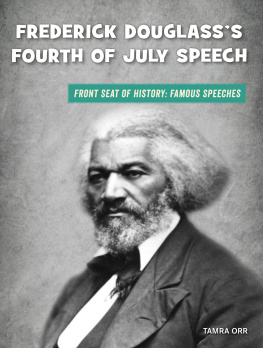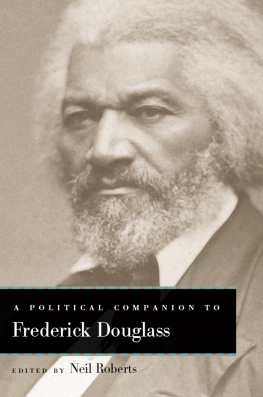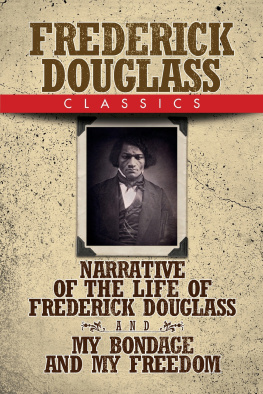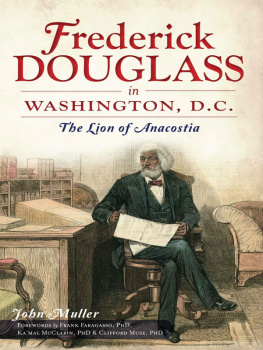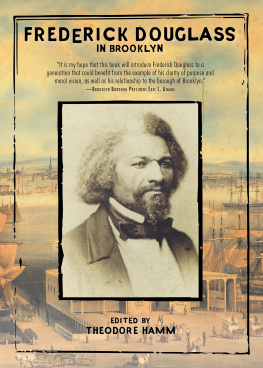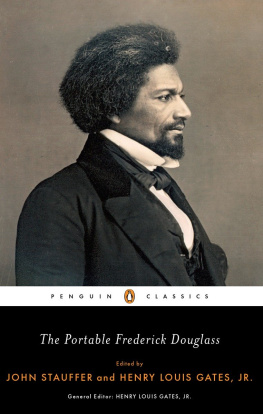ALSO BY TOM CHAFFIN
Met His Every Goal? James K. Polk and the Legends of Manifest Destiny (2014)
The H. L. Hunley: The Secret Hope of the Confederacy (2008)
Sea of Gray: The Around-the-World Odyssey of the Confederate Raider Shenandoah (2006)
Pathfinder: John Charles Frmont and the Course of American Empire (2002)
Fatal Glory: Narciso Lpez and the First Clandestine U.S. War against Cuba (1996)
Edited Historical Documents:
Correspondence of James K. Polk, Volume 12, JanuaryJuly 1847. Coeditor, with Michael David Cohen (2013)
University of Virginia Press
2014 by Tom Chaffin
All rights reserved
Printed in the United States of America on acid-free paper
First published 2014
9 8 7 6 5 4 3 2 1
Library of Congress Cataloging-in-Publication Data
Chaffin, Tom.
Giants Causeway : Frederick Douglasss Irish odyssey and the making of an American visionary / Tom Chaffin.
pages cm
Includes bibliographical references and index.
ISBN 978-0-8139-3610-9 (cloth : acid-free paper)
ISBN 978-0-8139-3611-6 (e-book)
1. Douglass, Frederick, 18181895TravelIreland. 2. Douglass, Frederick, 18181895Relations with Irish. 3. Douglass, Frederick, 18181895Political and social views. 4. Douglass, Frederick, 18181895Oratory. 5. African American abolitionistsBiography. 6. African American oratorsBiography. 7. IrelandDescription and travel. 8. IrelandRace relationsHistory19th century. 9. Garrison, William Lloyd, 18051879. I. Title.
E449.D75C46 2014
973.8092dc23
2013044114
Frontispiece: Frederick Douglass in 1845, the year he departed for his lecture tour of Ireland and Britain. (Print Collection, Miriam and Ira D. Wallach Division of Art, Prints and Photographs, The New York Public Library, Astor, Lenox and Tilden Foundation)
PREFACE
Great Brunswick Street
ON A CHILL, wind-whipped January morning not long ago, on Dublins Pearse Street, my friend Steve Burrows and I went searching for the house where Frederick Douglass, in the fall of 1845, stowed his steamer trunks for five weeks. Commencing a lecture tour of Ireland, the former slave and abolitionist was staying in Dublin as a guest in the home of the Quaker printer and abolitionist Richard Davis Webb and his family.
During the 1840s, that stretch of Pearse, then called Great Brunswick Street, was a motley collection of businesses and homes. And today, it retains that eclectic characterrows of two-story brick and stucco-clad Victorian buildings, interspersed with modern structures.
Steve is an engineer, has lived in Dublin for decades, and knows the city well. Our hunt that morning was further aided by tips I had acquired a day earlier from an Irish historian. After an hour or so, however, we abandoned our search. Apparently, Webbs house had been demolished years ago. Nowadays, its as gone as once nearby Conciliation Hall, the cavernous headquarters of Daniel OConnells Loyal Repeal Association, which rose on nearby Burgh Quay along the River Liffey. It was in Conciliation Hall that the celebrated Irish nationalist OConnell (the Liberator), to both mens delight, introduced Douglass to an audience as the black OConnell of the United States.
During research for this book in Ireland, I conducted other similarly unyielding searches for Douglasss traces. In Cork City, he stayed for five weeks as a guest in the home of the businessman and social activist Thomas Jennings and his family. Their house, according to an 1840s directory, sat on Brown Street. The house in which Douglass stayed, I eventually concluded, had sat inside or near a sprawling space now dominated by the Tesco where, several times each week, I purchased groceries.
But if physical traces of Douglasss passage through Ireland have disappeared, another, more significant, vestige endures. It lies in the words, preserved for posterity, of the orations he delivered on Irish soil.
Many know of Douglasss authorship of the Narrative of the Life of Frederick Douglass, an American Slave and his role as a source of counsel for President Lincoln. More generally, many are also aware of his escape from slavery and his self-elevation into the ranks of his ages most celebrated public lecturers and writers. Often overlooked, however, is the fact that it was Douglasss public lectures, not his writings, that brought him his first renown. And during those early years, he extemporized his orations. His only concession to pen and paper in those years was the occasional glance at a scrawled list of topics.
As it happened, however, Douglasss days as an itinerant, extemporaneous lecturer were short-lived. In 1847after his return from Ireland and Britainhe established his newspaper, the North Star, in Rochester, New York. His duties as publisher and editor placed added demands on his time, and lecture dates became scarcer. Over those later years, called upon to deliver a public lecture, he often read word for word from a preparedand, in many cases, already publishedtext.
Thus, for all practical purposes, Douglasss career as an itinerant and extemporaneous lecturer concluded with the overseas tour chronicled in this work. Unfortunately for posterity, few verbatim accounts of Douglasss early extemporized lectures on American soil exist; he was less famous then, and the U.S. papers that did cover his lectures tended to offer only brief summaries of them.
Fortunately, however, detailed accounts of many, perhaps most, of Douglasss extemporized lectures from his British Isles tour do remain extantif only because Irish and British newspapers tended to publish lengthy, detailed reports on them. For that reason, his lecture tour of Ireland and Britain offers an opportunity to savor a singularly rich period of his oratorical oeuvre.
Moreover, the tour also affords a unique view into an often overlooked, but transformative chapter in the life of an extraordinary public figure. Douglass himself recounts the tour in two of his three memoirs. And many of his published letters also recount those experiences. So why, then, are his travels in Ireland and Britain not more widely known? The simplest answer is that his most famous memoir, Narrative of the Life of Frederick Douglass, an American Slave (1845), was written beforeand thus includes no coverage ofthe tour. Indeed, the tour was prompted by the Narratives publication. And the Narrative, to this day, remains the best known of Douglasss three autobiographies. His two other memoirspublished, respectively, in 1855 and 1882are today (undeservedly) seldom read.
In the second of his three memoirs, the 464-page-long



